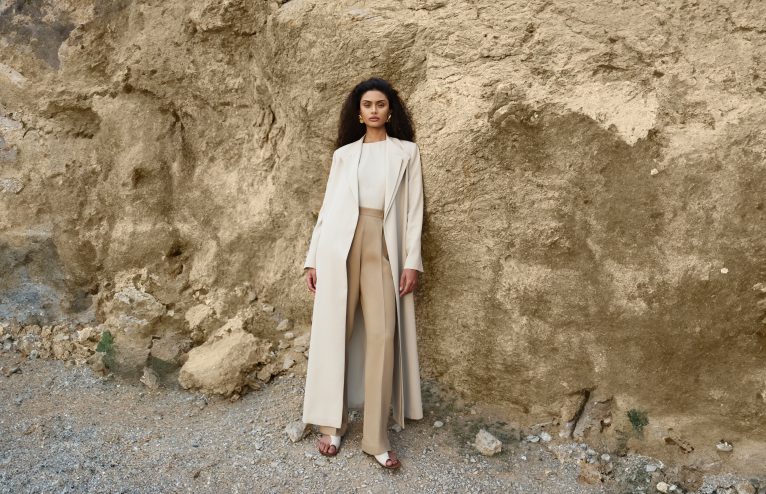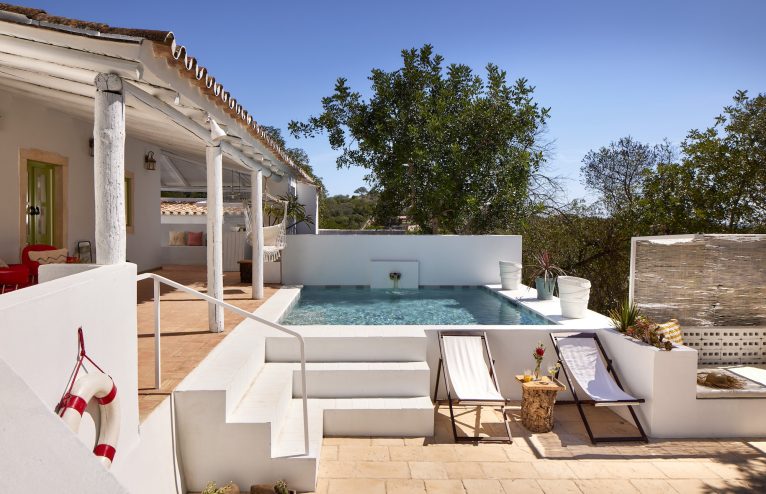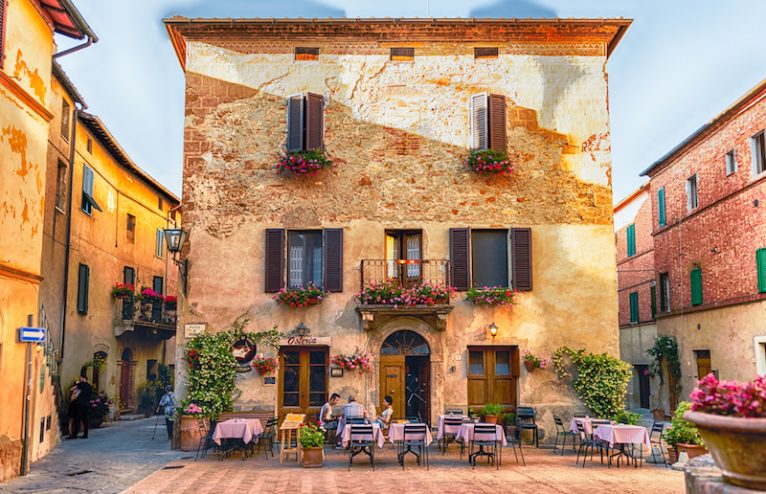There’s a pleasure to be found in carefree idleness. In Italy, they call it dolce far niente, literally meaning sweet nothing. It’s about indulging in a slower pace and revelling in the pleasantries of doing nothing much at all.
The idea might sound simple, but it can be exceptionally hard to do nothing and not feel a nagging sense of guilt about your lack of productivity. But in the hilltop towns of rural Tuscany, dolce far niente flows as abundantly as the region’s Chianti wine. The days here unfold slowly, mornings start with a frothy cappuccino, perhaps with a view of Tuscany’s famed countryside, with its rolling hills, swathes of vineyards and neat rows of slender cypress trees. Days blur into night, as friends and families gather over steaming bowls of Pappa al Pomodoro soup, the fiery red tomatoes grown just next door. Wine is shared, good conversation flows, and each moment is savoured.
If you’re looking for a laid-back getaway where life takes on a slower pace, then an escape to Tuscany could be just the ticket. Our favourite towns to visit and places to stay (including a grand 19th-century villa and a former convent) can be found below. We’ve also included some great local restaurants and a few activities. Hire a car and take your time to explore the region, though no one’s judging if you decide to do nothing much at all.
WHERE TO STAY
Villa Lena
You’ll find Villa Lena on a sprawling 500-hectare estate, set among neatly trellised vines, tangles of olive groves and organic vegetable patches.
Photo Credit: Niklas Adrian Vindelev
The 19 guestrooms and 11 apartments are peppered around the estate, and a secluded villa can accommodate larger groups. The most luxurious (and recently renovated) rooms can be found in the Fattoria, an ancient stable block transformed into a spacious co-working space, reception area and yoga studio. Our ‘Superior Fattoria’ room had upcycled furniture salvaged from local flea markets, and an impressive white and red marble bathroom with steps leading up to a rainfall shower.
The centrepiece of the estate is a 19th-century peach-hued villa, with faded ceiling frescoes and brassy chandeliers which serve as a reminder of its grand past. Once home to raucous parties and Italian aristocrats, it now houses the Villa Lena Art Foundation and several artists-in-residence. The residency programme gives talented creatives space to work and create for 6 weeks at a time, so expect to bump into artists, photographers and musicians during your stay. Work from the previous artists-in-residence is proudly displayed throughout the estate, from paintings to poems. Guests are encouraged to get involved, so expect creative masterclasses on everything from botanical drawing to crochet. On our first evening, we were even treated to a brilliant live performance by musician-in-residence Henry Grace.
Villa Lena’s San Michele restaurant (see Eating and Drinking) offers all-day dining and there’s a small bar tucked away at the back – don’t miss the Basilico Smash, a sour cocktail made with freshly picked basil from the garden. Guests can choose from a B&B or a half-board package.
Days at Villa Lena can be as busy, or as relaxed as you like. Clamber up the ruins of a medieval castle in the Toiano Vecchio park for sweeping views of the surrounding countryside or take part in a yoga class or pasta-making workshop. Alternatively, just relish in the delights of dolce far niente Villa Lena style.
L’Andana
We arrived at L’Andana on an un-seasonally wet August afternoon. Torrential rain and a thick fog had followed us all the way from Florence (a 3.5-hour drive if you take the scenic route, or just 2-hours if you take the highway) and day one of our Tuscan road trip was a bit of a damp squib. Sloshing our way along L’Andana’s private driveway, we felt a million miles away from dolce far niente, or even la dolce vita, but luckily L’Andana delivered a great big slice of both.
The luxury resort is tucked away in the coastal Maremma region, an area blessed with far fewer tourists than the rest of Tuscany. The landscape is varied with golden sandy beaches, emerald green nature reserves and farmland which edges right up to the glossy blue Tyrrhenian Sea.
L’Andana offers rooms in two buildings – the grand ‘La Villa’ (once owned by the Medici family), and ‘La Casa’ which overlooks the golf driving range and olive groves.
We spent three blissful nights in La Villa’s Prestige Suite which had 180-degree views of the estate’s vineyards and the hills beyond. Our bathroom had a stone fireplace and chaise longue which made it feel ultra-luxurious. And the oversized bath (surely made for two) was perfect for early evening soaks before an Aperitivo on the front lawn.
The vineyards surrounding the hotel belong to the on-site Acqua Giusta winery, which produces around 2,000 bottles of red, white and Rosé wine a year (tours and tastings can be arranged for €20 per person). Guests can also borrow bikes to explore neighbouring vineyards and the surrounding countryside.
If you fancy a trip to the beach (just 10km away), the hotel can book sun loungers at the La Cannucce restaurant for €60 for two per day. Or stay closer to home and spend a day at the resort’s adults-only pool – conveniently located next to the ESPA spa. There’s also a kid’s pool, but it’s far enough away that you won’t hear a peep.
There are two restaurants at L’Andana, the all-day La Villa restaurant and the Michelin Starred, Trattoria Enrico Bartolini (see Eating and Drinking). An informal bar can be found in the ‘winter garden’ a lobby type area which feels like it’s been lifted straight from a country club in the Hamptons.
La Bandita Townhouse
For a taste of laid-back village life, Tuscan style, check-in to La Bandita Townhouse, a boutique bolthole in the heart of historic Pienza.
For over 500 years, it was nuns who walked the corridors and slept in the rooms of the ancient building which now houses La Bandita Townhouse. Transforming the dilapidated convent into a 12-bedroom hotel was no easy feat, but it’s now one of the most stylish properties in town.
Centuries-old stone walls were uncovered during the renovations and now feature as a striking part of the hotel’s minimalist design. Lofty ceilings with painted white beams and large windows (some of which boast views across the Val d’Orcia valley) keep the property light and airy.
Our room (a Junior Suite) had a four-poster bed, a free-standing bath, and a large rainfall shower with toiletries from Sicilian brand Ortigia (which smelled divine). We even had a little balcony which overlooked the garden and Townhouse Caffé below.
Breakfast is served in the Townhouse Caffé, which is also one of the most popular spots in town for dinner (see Eating and Drinking). There’s no bar at the hotel, but you’ll find a complimentary mini bar in the room and an honesty ‘bar’ with wine and beer in the lounge. The lounge has a library of sorts and a record player with a great vinyl selection, it was the perfect spot for a nightcap.
Guests can use the swimming pool at sister property La Bandita Countryhouse (as long as it’s not booked out). The two properties are just 13km apart, though the final 3km is an uphill trundle along an unpaved dirt track. The views across the green swathe of the Lucciloa Bella Nature Reserve are absolutely worth the climb and we spent a glorious day by the pool here just lapping up the view and enjoying the glorious isolation.
TUSCAN TOWNS AND VILLAGES
There are hundreds of little towns and villages to explore when driving around Tuscany, and it would be impossible (and far too stressful) to see them all. The below is by no means a definitive list, but they were some of our favourites.
Pienza
A hilltop town which was once a favourite with Pope Pius II – he built his summer residence (the Piccolomini Palace) here. It’s a popular spot for tourists, but village life still rules these cobbled streets. Pienza’s also known for its Pecorino cheese, so don’t depart without trying some slathered in local honey.
Chianti Region
Very scenic with a quintessentially Tuscan landscape. Famous for its red wine and unsurprisingly, the sheer number of wineries. Many offer free tastings and they let you know if they’re open (aperto) with a sign on the road outside.
Castiglione della Pescaia
Just down the road from L’Andana – we stopped here after a day at the beach and were absolutely delighted when we paid just 20 cents for 1 hour of parking. Cheap parking aside, don’t miss a climb up the medieval fortress in the centre of town for sweeping views of the Tyrrhenian Sea.
Montalcino
Another hilltop town with stunning views and a fortress (Tuscany has many), for the best view climb up into the fortress’ ramparts (tickets are purchased from the wine shop below). Montalcino is also known for its highly prized (and highly expensive) Brunello red wine.
Bagno Vignoni
A small hamlet with natural hot springs – bring your bikini for this stop. The main square is built around an old Roman bath and is the most unique Italian Piazza you’ll ever see.
EATING AND DRINKING
Italy is famed for its cuisine and Tuscany offers some of the best in the country. Alongside red wine and gelato, don’t miss the Wild Boar Ragu, Florentine steak (Bistecca Florentina on menus) and Pappa Al Pomodoro (a thick bread and tomato soup).
Townhouse Caffé, Pienza
Located inside La Bandita Townhouse, the restaurant serves typical Tuscan fare with a twist, including Gnocchi with Gorgonzola, Pear and Walnut (highly recommended) and a deconstructed Tiramisu. The pasta is made fresh every morning and if you’re staying at the hotel, you’ll likely see the chefs rolling it out during breakfast.
La Trattoria Enrico Bartolini, L’Andana
Situated within the grounds of L’Andana, this relaxed restaurant has one Michelin star. Tuscan Chef Enrico Bartolini heads up the kitchen and the menu offers a refined take on Italian classics. There’s a 5-course set-menu for €120 per person.
Bottega dell’Abate, Monteriggioni
We stumbled upon this small roadside restaurant during our drive from Florence to L’Andana and it was a welcome retreat from the rain. The owner will happily translate the Italian menu for you (the Wild Boar Ragu was delicious), and they sell wine to takeaway (or drink in) from the Casale Dello Sparviero vineyard next door.
San Michele Restaurant, Villa Lena
Villa Lena’s farm-to-table restaurant San Michele gets 75% of its ingredients from the surrounding estate (the rest is grown on neighbouring farms). Mint green bottles of ‘Villa Lena’ Extra Virgin Olive Oil are popped on tables at lunch and dinner ready for slathering on hunks of fresh bread. They also have their own Sangiovese wines – Da Tutti I Gironi, a younger and easy-drinking drop and Da Occasione (my personal favourite) a more complex and full-bodied wine.
Idyllium, Pienza
For the best sunset views in Pienza grab yourself a table at Idyllium. Their outdoor terrace on Via Gozzante has sweeping views across the Val d’Orcia valley with its cultivated fields and cypress-lined roads and it’s the perfect spot for an Aperitivo. Get there early (they’re usually full by 7:30ish) and order the Aperol Spritz with a side of Pecorino Cheese and Honey (a local delicacy).
5 TOP TIPS FOR DRIVING IN TUSCANY
When plotting your route select ‘avoid motorways & tolls’ on Google Maps. The route might be longer, but the stunning landscape and quiet roads are worth the additional mileage.
When choosing a hire car, opt for a 4×4 or at least an SUV. Almost all villas are located at the end of unpaved tracks and smaller roads can be littered with potholes – it might be tempting to opt for the Ferrari but trust us on this one.
Before you depart download offline maps as some areas have limited GPS signal – we learned this the hard way and spent 20 minutes driving in the wrong direction when the signal dropped out.
Scope out the parking situation before you arrive at the hilltop towns – most won’t allow traffic through the historical centre and there are hefty fines for rule-breakers.
If starting your trip from Florence the SR222 cuts straight through Chianti’s wine country. Further south, the area of Val d’Orcia is one of Tuscany most scenic and not to be missed.





























Any Questions or Tips to add?